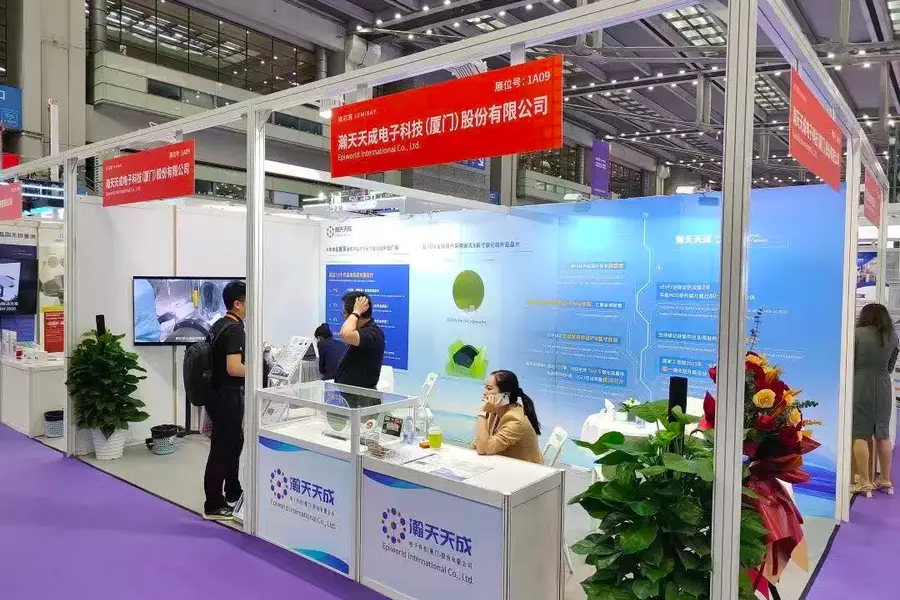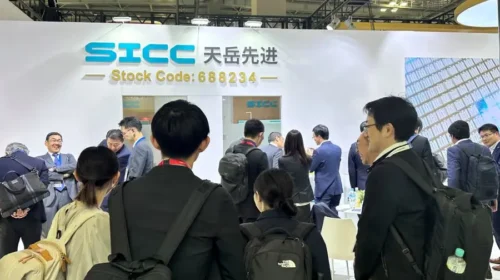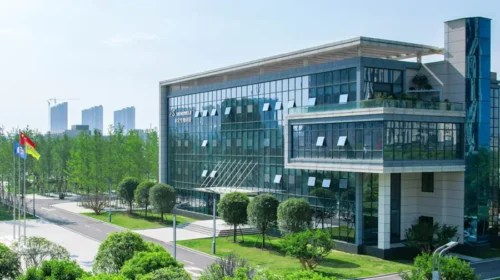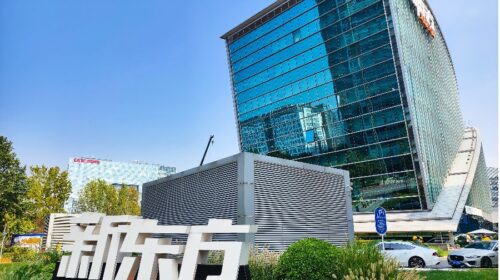Can Epiworld maintain an edge as silicon wafer prices slide?

The leading producer of silicon carbide wafers is making a renewed IPO pitch as a price war squeezes profits and makes it more reliant on state subsidies
Key Takeaways:
- Revenue for the first five months of 2025 fell 30% while gross margin was also down
- Government subsidies accounted for nearly 32% of revenue
By Lee Shih Ta
Prices may be falling, and competition is fierce, but the silicon wafer industry is still booming as China strives to build an independent supply chain for advanced semiconductors.
Against this backdrop, a leading producer of silicon carbide (SiC) wafers used in high-powered electronics is making a renewed attempt to raise capital by listing its shares on the Hong Kong stock market.
Challenges have been piling up since Epiworld International Co. Ltd., a Xiamen-based wafer foundry, made its first listing application back in April. This time around, the company is grappling with falling revenue and shrinking margins.
While Epiworld’s initial listing attempt stalled, a business rival succeeded in booking its place on the Hong Kong market. In August SICC Co. Ltd. (688234.SH; 2631.HK) became the first supplier of third-generation semiconductor materials to be traded on both the Hong Kong and mainland Chinese markets. SICC produces the base material, silicon-carbon substrates, as well as the finished semiconductor wafers used in advanced devices. By contrast, Epiworld focuses on epitaxial wafers alone, exposing it to greater downstream price volatility and industry pressure.
Earnings slippage
Based on the financials, the listing could have become a harder sell for investors. According to earnings data in its listing paperwork, Epiworld logged revenues of 441 million yuan ($62 million) in 2022, rising to 1.14 billion yuan in 2023, but turnover slipped to 974 million yuan in 2024. The latest figures for 2025 show a sharp slide. Revenues fell 30% in the first five months of this year to 266 million yuan from the equivalent period of 2024. Gross margin plunged from 44.7% in 2022 to 18.7% in 2025. Although the company is still in the black, net profit for the period sank 33% to 14.15 million yuan.
The drop was blamed on lower average selling prices and higher costs of yield ramping, the process of taking products from prototype into mass production.
Even with rapidly rising government subsidies and high barriers to entry, producers are still struggling with the fallout from an industry-wide wafer price war.
In setting out its development goals for the five years to 2025, China made third-generation semiconductors a strategic priority, prompting local governments to set up funds to help localize wafer production. Epiworld benefited from annual government subsidies of 13.5 million yuan, 47.4 million yuan and 112 million yuan from 2022 to 2024. In the first five months of this year the company had already received 84 million yuan in state support, 2.14 times more than in the same period a year earlier. Subsidies as a share of revenue have surged to 31.6% for those five months from just 3.1% in 2022.
Those figures indicate that the company has yet to build a sustainable business revenue stream and remains heavily dependent on policy support. As the industry faces mounting price pressure, Epiworld could be facing its first real test.
Epiworld’s main product, the SiC epitaxial wafer, is a key midstream material for power semiconductors. Epitaxy is the process of growing a thin layer of crystals over a silicon carbide base to create a sophisticated wafer suitable for complex microprocessors, widely used in electric vehicle inverters, fast-charging modules and industrial power systems. The company describes its mission as building domestic capability and technological leadership, claiming a world first in mass-producing 8-inch SiC epitaxial wafers.
But the market outlook has turned cloudy, as the industry’s rapid ramp-up has turned a SiC shortage into a glut, triggering an intense price war. The first major casualty was leading SiC company Wolfspeed (WOLF.US), which filed for Chapter 11 bankruptcy protection in May but has since exited the process after a restructuring.
Pricing pressure and profit risks
The Epiworld listing documents stated that the average price of a 6-inch epitaxial wafer is expected to drop to 4,400 yuan by 2029, compared with about 7,300 yuan in 2024, mainly due to falling substrate prices. The company warned that its business would suffer if pricing strategies could not sustain both competitiveness and margins.
However, Epiworld is not without its strengths, including years of expertise in epitaxial technologies. An early investment in developing 8-inch SiC wafers could pay off if they drive the industry’s next wave of innovation.
Moreover, Epiworld’s finances are on a solid footing, with positive operating cash flow. As of May, cash and cash equivalents stood at 1.78 billion yuan, a year-on-year rise of 130%, while the firm’s debt-to-asset ratio fell to 30.4% from 37.1% at the end of 2024.
Investor demand is buoyant, judging from SICC’s stock market performance. Since its debut in August, the stock has climbed nearly 20%, lifting the company’s market capitalization to about HK$39 billion and its price-to-earnings ratio to around 235 times.
Meanwhile, another stock market newcomer, InnoScience (2577.HK), has surged about 158%, underscoring the market enthusiasm for the sector. Epiworld’s renewed IPO attempt will serve as a litmus test of whether the SiC story can continue to attract investment interest and long-term capital.
To subscribe to Bamboo Works weekly free newsletter, click here





